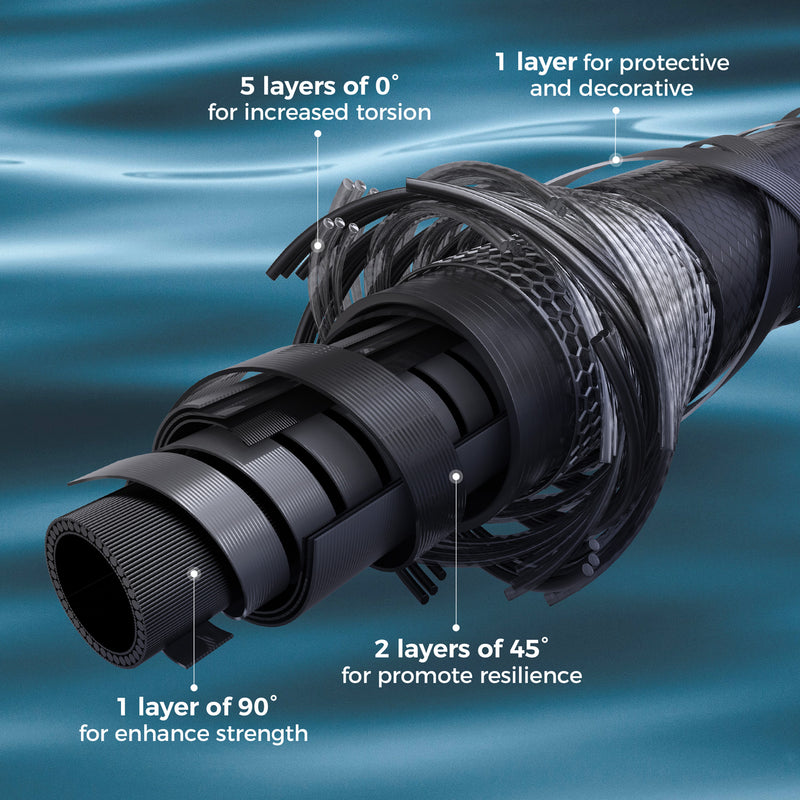Unveiling the Secrets: What Makes a Fishing Rod Truly Exceptional?
Fishing is more than just a pastime; it's a cherished activity that allows individuals to connect with nature, unwind, and even bond with friends and family. At the heart of this experience lies the fishing rod, a crucial piece of equipment that can significantly influence your success and enjoyment on the water. The quality of a fishing rod plays a pivotal role, affecting everything from your casting accuracy to how well you feel a fish nibble on your bait. In this article, we will explore the key features and specifications that distinguish high-quality fishing rods from their lower-quality counterparts. Whether you are a novice angler or a seasoned pro, understanding what makes a fishing rod exceptional can enhance your fishing adventures.

Understanding the Basics of Fishing Rods
Fishing rods are long, flexible tools designed to catch fish by casting bait or lures into the water. They consist of several basic components, including the blank (the main body of the rod), guides (the loops that hold the fishing line), a reel seat (the part where the reel attaches), and the handle (where the angler grips the rod). Fishing rods come in various types tailored to specific fishing styles, such as spinning rods, baitcasting rods, and fly rods. Each type is designed with unique characteristics to suit different fishing techniques. The materials used in constructing fishing rods—such as graphite, fiberglass, and composite materials—play a significant role in determining the rod's overall quality. High-quality rods often utilize advanced materials that provide better performance and durability compared to standard options.
Key Features of High-Quality Fishing Rods
When evaluating the quality of fishing rods, several essential features come into play: sensitivity, strength, flexibility, and weight. These attributes work together to enhance the overall fishing experience. High-quality fishing rods are designed to be sensitive enough to detect even the slightest bites, allowing anglers to react quickly. This sensitivity is often achieved through the use of advanced materials and construction techniques. Additionally, a well-made rod should possess strength and durability, enabling it to withstand the rigors of fishing, especially when reeling in larger fish. Flexibility is also crucial; a good fishing rod needs to have the right amount of bend to absorb shocks and fight fish effectively without breaking. Finally, the weight of the rod impacts how easily it can be handled during long fishing sessions, making balance an important consideration for comfort and performance.
Sensitivity
Sensitivity is a critical feature that affects an angler's ability to feel even the faintest nibbles on the line. A sensitive rod allows for better bite detection, which can be the difference between a successful catch and an empty hook. High-quality rods often utilize materials like graphite, which is known for its lightweight yet sturdy properties. This material transmits vibrations more effectively than heavier alternatives, enabling anglers to sense subtle movements in the water. A friend of mine, an avid angler, often emphasizes how a sensitive rod transformed his fishing trips, allowing him to catch fish that others missed due to their lack of awareness.
Strength and Durability
The strength of a fishing rod is paramount, especially when battling larger fish. A strong rod can handle the stress of casting and reeling without breaking. High-quality rods are typically made from durable materials that resist wear and tear over time. For instance, rods made from high-modulus graphite are not only lightweight but also incredibly strong, allowing for both sensitivity and durability. This balance ensures that the rod can withstand the forces exerted by both the angler and the fish. A personal experience I had while fishing with a friend underscored this point; his high-quality rod easily handled a sizeable striped bass, while my older, less robust rod struggled, leading to a lost fish.
Weight and Balance
The weight and balance of a fishing rod significantly impact casting and overall performance. A well-balanced rod allows for longer casts and reduces fatigue during extended fishing sessions. Lightweight rods can be easier to handle, making them ideal for beginners and seasoned anglers alike. However, it's essential to find a rod that balances weight with strength. An unbalanced rod can lead to poor handling and reduced accuracy. I recall a fishing trip where I switched to a lighter rod, and the difference in my casting ability was remarkable. It allowed me to fish for hours without the usual arm fatigue.
Specifications to Look For
When shopping for a fishing rod, certain specifications can indicate its quality. Key specifications to consider include action, power, length, and line rating. Action refers to how much the rod bends when pressure is applied; fast action rods bend primarily at the tip, while slow action rods bend throughout. Power describes the rod's strength, usually categorized as ultra-light, light, medium, medium-heavy, or heavy. The length of the rod affects casting distance and control, with longer rods typically offering greater distance. Lastly, line rating indicates the weight of the line that the rod can handle effectively. These specifications are crucial for selecting a rod that matches your fishing style and preferences.
Price vs. Quality: Finding the Right Balance
There is often a misconception that a higher price tag guarantees better quality in fishing rods. While it is true that many premium rods offer enhanced performance and durability, not every expensive rod is necessarily the best choice for every angler. It's vital to assess the value based on your specific fishing needs and style. Some rods may be priced lower yet still provide excellent performance for casual anglers. When considering your purchase, focus on features, materials, and specifications that align with your fishing goals rather than solely on price. I’ve seen friends invest in affordable yet high-performing rods that served them well for years, proving that quality isn't always synonymous with high cost.
Choosing the Right Fishing Rod for an Enhanced Experience
In conclusion, selecting a high-quality fishing rod is essential for enhancing your fishing experience. Understanding the key features such as sensitivity, strength, flexibility, and weight, as well as the important specifications like action and power, can help you make an informed decision. Remember that while price can be an indicator of quality, it's not the sole determinant. By considering these factors, you can find a fishing rod that meets your needs, ultimately leading to more successful and enjoyable fishing trips. So, the next time you're in the market for a fishing rod, keep these insights in mind to ensure you choose a rod that truly elevates your fishing adventures.


